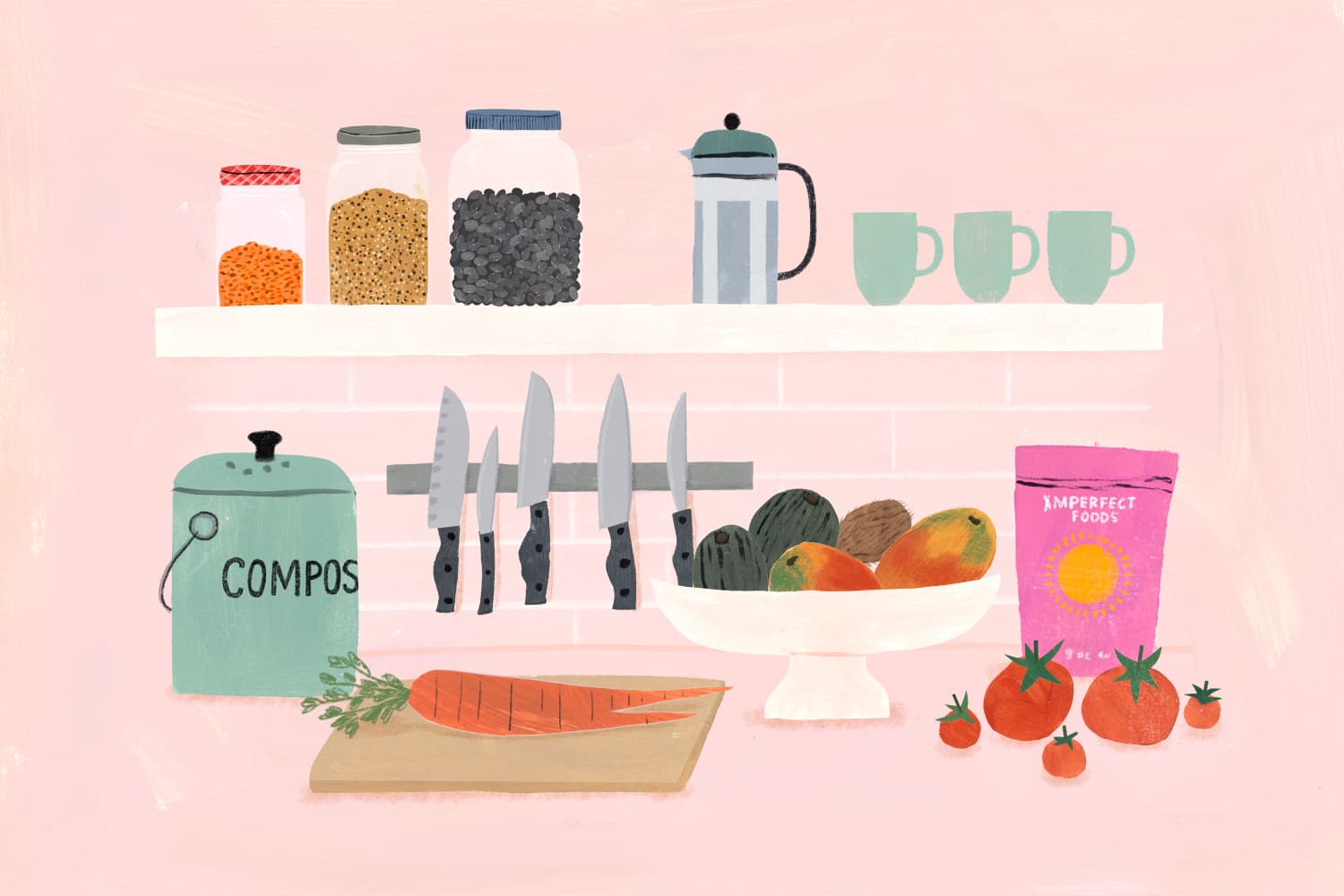Products You May Like

Every big task — even one as huge as saving the planet! — can be broken down into small steps. Living more eco-consciously may sound overwhelming at first, but simple habits lead to big impact. This is especially true for our homes’ sustainability HQ: the kitchen.
Food waste is a big piece of the sustainability puzzle: 25% of the food system’s emissions comes from producing food that’s ultimately wasted. From what food we buy to how we store it, the choices we make in the kitchen can have a huge impact on the world around us. These five simple, sustainable actions will help make that impact a little kinder. Already consider yourself a certified-organic, green-living guru? You might just learn some new tricks, too!
Use all parts of your produce.
Don’t toss those scraps! Vegetable tips are a great base for homemade broth: Just store them in the freezer until you have enough to start simmering. Lemon peels and juiced lemon halves are great for cleaning surfaces, plus they’ll keep your garbage disposal smelling fresh. And don’t overlook parts of veggies you might not use: Broccoli stalks are great in stir fries, and carrot greens make for a yummy pesto. Whatever you don’t find a second life for can go into the compost bin.
Rigid labeling standards are behind much of our needless food waste. Did you know that some retailers snub otherwise delicious almonds that get scratched during harvest? Or that most retailers require tri-color quinoa to have a specific color ratio? Imperfect Foods is on a mission to eliminate all that waste and build a better food system. Their customizable grocery deliveries feature surplus, irregular, and quirky produce and grocery items—including all those blemished almonds and mismatched quinoa. (We still love you, quinoa.)
Use the right food storage system.
It happens to the best of us: We forget about that box of quinoa or bag of dried beans, and by the time we remember, they’re past their prime. Switch to clear containers. You’ll see exactly what ingredients you have, which means you’ll be likelier to use them. (Bonus: It’ll look cuter, too.) Use canning jars or repurpose glass jars that once held jam or peanut butter. Sustainability two-for-one!
Learn how to organize your fridge.
A beautifully ordered refrigerator isn’t just the stuff of organization Instagram. It’s also how you get your food to stay fresher and more accessible. Instead of using your produce drawers interchangeably, adjust each for high or low humidity. Citrus and apples prefer low humidity. Use the high-humidity drawer for asparagus, carrots, celery, broccoli, cauliflower, woody herbs, summer squash, and leafy greens. (Soft herbs and mushrooms will be happiest on shelves.) Then go ahead and ‘gram. You earned it.
And learn what to keep out of the fridge.
A big bowl on the counter is a great home for avocados, tomatoes, pears, bananas, mango, kiwi, and pineapple. Just keep your fruits and veggies in two separate bowls, as some fruits release gases that will make other produce spoil faster. Choose a cool, dark place (like a cupboard or drawer) for garlic, onions, shallots, potatoes, and sweet potatoes. Store these items in their happy places, and you’ll keep them fresher — and tastier — longer.
From quirky produce and wholesome pantry staples to responsibly raised meat and plant-based proteins, Imperfect Foods makes sustainability easy, affordable, and delicious. Their weekly orders are handpicked and farm-fresh, and totally customizable. Sign up and start eating more sustainably today!
